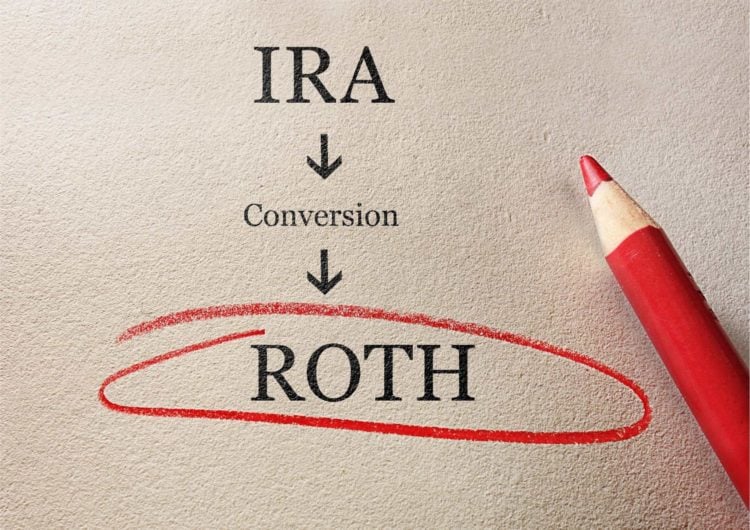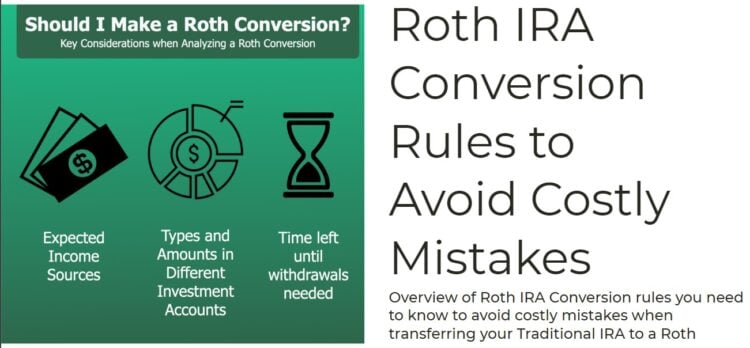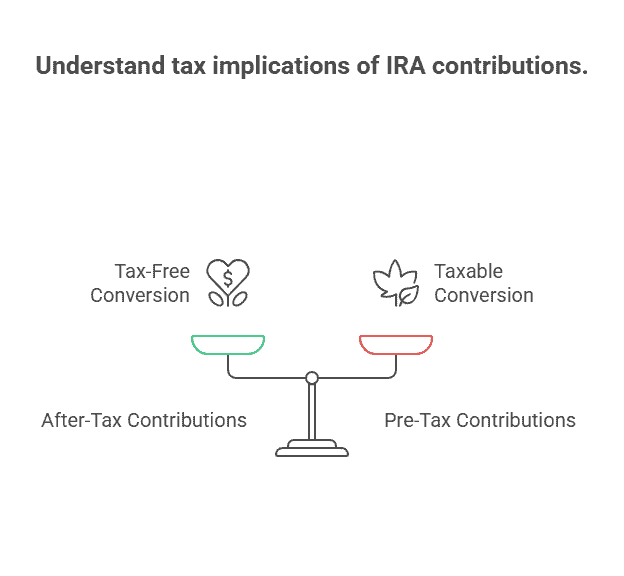Let’s be real: staring down the Roth vs. Traditional 401(k) decision feels like defusing a bomb with two wires, both labeled “TAXES.” I’ve had clients walk into my office with a mix of hope and sheer terror about a Roth conversion, terrified of the upfront tax bill.
For over 25 years, I’ve seen smart people get paralyzed by this.
They’re so afraid of making a mistake that they do nothing, which is often the costliest error of all, especially now.Why now? Because the tax rates will probably never be lower than they are today. This is a critical, limited-time window.
Forget the generic advice. This guide is your playbook.
We’ll cut through the jargon, bust the myths, and use a powerful calculator to give you clarity. Think of a Roth conversion like paying the highway toll now to enjoy a tax-free freeway for the rest of your retirement.
The question is, is that toll worth it for you? Let’s find out.
Key Takeaways Ahead
The First Fork in the Road: Roth vs. Traditional 401(k)?
Before we can even talk about converting past savings, you need a strategy for today’s contributions. This is the foundational choice.
Traditional 401(k): Pay Taxes Later.
Your contributions are pre-tax, which means you get an immediate tax deduction, lowering your taxable income today. It feels good now, but every dollar you withdraw in retirement is taxed as ordinary income.
Roth 401(k): Pay Taxes Now.
Your contributions are made with after-tax dollars. It might pinch a little today, but your qualified withdrawals in retirement are 100% tax-free. This includes all the investment growth your money generates over the decades.
🔍 Explained Simply
Think of it as choosing when to pay your taxes on your retirement savings: now or later. With a Traditional 401(k), you get a tax break today but pay taxes on every dollar you withdraw in retirement. With a Roth 401(k), you pay the taxes now to create a bucket of money that can grow and be withdrawn completely tax-free when you need it most.
Michael Ryan’s Insider Tip:
The decision boils down to a simple question: Do you think your tax rate will be higher or lower in retirement?
If you’re in a lower bracket now (e.g., the 12% or 22% federal brackets) and expect your income to grow, paying taxes now with a Roth 401(k) is a brilliant move.
If you’re in your peak earning years (e.g., the 24% bracket or higher) and expect a lower tax bracket in retirement, the immediate tax break from a Traditional 401(k) is your friend.
The Power Play: What is a Roth Conversion?
A Roth conversion is the process of moving money from a pre-tax retirement account—like a Traditional IRA, SEP IRA, SIMPLE IRA, or old 401(k)—into a post-tax Roth IRA. When you do this, you must pay ordinary income tax on the full amount you convert in the year of the conversion.
Why on earth would anyone volunteer to pay a big tax bill?
Because once that money is in the Roth, all of its future growth and qualified withdrawals are completely tax-free. It’s a strategic move to create a bucket of tax-free money, which is incredibly powerful for managing your tax bracket in retirement and eliminating the threat of future tax hikes.
A well-timed conversion is a cornerstone of a sound retirement tax planning strategy.
💡 Michael Ryan Money Tip
I call a Roth conversion “buying tax-rate insurance.” You pay taxes at today’s known rates to protect yourself against the risk of unknown, potentially much higher tax rates in the future. It’s a powerful move to take control of your future tax bill, especially with current rates set to expire after 2025.
How to Use Our Roth Decision Calculator
The most common question I get is, “How much will this actually cost me?” The second is, “Will it be worth it?” A good calculator doesn’t just give you a number; it gives you a breakeven point and clarifies your decision.
Our tool is designed to cut through the complexity. To get a clear picture, you’ll need a few key pieces of information:
- Your Current Financials: Filing Status (Single, MFJ, etc.), current gross income, and state of residence.
- The Conversion Amount: How much you plan to convert from your pre-tax retirement account.
- Tax Rate Projections: Your best estimate for your marginal tax rate now and your effective tax rate in retirement. Model a few scenarios.
- Investment Projections: A reasonable estimate of your expected annual return on investment (e.g., 6-8%).
The calculator will then model the long-term impact, showing you the estimated upfront tax cost versus the potential tax-free growth, helping you make a data-driven decision.
Roth Decision Calculator
Roth Conversion Summary
| Scenario | Est. After-Tax Value at Retirement |
|---|---|
| Convert to Roth | |
| Keep Traditional | |
| Difference |
Comparison chart appears here
Roth vs. Traditional Contribution Summary
| Account Type | Est. After-Tax Value at Retirement |
|---|---|
| Roth Contribution | |
| Traditional Contribution | |
| Difference |
(Assumes tax savings from Traditional are invested)
Comparison chart appears here
Disclaimer: Calculations are estimates based on inputs and simplified tax assumptions. They do not account for state taxes beyond the rate entered, phase-outs, alternative minimum tax, potential tax law changes, or specific investment performance. This is not tax or investment advice. Consult qualified professionals.
Myth-Busting: Three Costly Roth Conversion Lies
I’ve heard some wild misconceptions over the years. Let’s pour some cold water on a few that could cost you a fortune.
- Myth #1: “You should always convert if you expect higher taxes in the future.”
- The Hard Truth: This is mostly true, but it’s dangerously simplistic. A massive conversion could push you into a much higher tax bracket today. More critically, it can trigger a nasty surprise called an Income-Related Monthly Adjustment Amount (IRMAA), a surcharge that significantly increases your Medicare Part B and Part D premiums. Because IRMAA is based on your tax return from two years prior, a large 2025 conversion could inflate your Medicare premiums in 2027.
- Myth #2: “It’s not worth converting if you can’t pay the tax bill from outside funds.”
- The Hard Truth: While paying taxes with non-retirement funds is ideal, it’s not always a deal-breaker. However, if you pay the taxes from the converted amount itself, you’re not only reducing the amount that grows tax-free, but you may also be subject to a 10% early withdrawal penalty on the tax portion if you’re under 59 ½.
- Myth #3: “A Roth conversion helps you avoid all RMDs.”
- The Hard Truth: A Roth IRA has no Required Minimum Distributions (RMDs) for the original owner. This is a huge benefit. However, a Roth 401(k) does have RMDs. Many people roll their Roth 401(k) into a Roth IRA after retiring for this very reason—to escape those forced, potentially ill-timed withdrawals. To learn more, check out our guide on RMD aggregation rules.
Advanced Strategies: How the Pros Think About Conversions
Once you master the basics, you can start using conversions like a financial chess master.
- The Multi-Year Conversion Ladder: Instead of converting a $500k IRA in one year and taking a massive tax hit, you convert smaller chunks (e.g., $50k) over several years. This allows you to “fill up” lower tax brackets each year, strategically managing your tax liability.
- Converting During a Market Downturn: When the market is down, your IRA balance is lower. Converting then means you’re paying tax on that depressed value. I had a client, “Frank,” whose $500k IRA had dropped to $380k in a downturn. He nervously converted a large portion at that lower value. When the market recovered, all of that rebound growth happened inside his Roth IRA, completely tax-free.
- The “Gap Year” Conversion: If you plan to retire early, before Social Security or pensions kick in, you might have a few years of very low income. This is a golden window to execute Roth conversions at some of the lowest tax rates of your life.
We are audience supported - when you make a purchase through our site, we may earn an affiliate commission.






